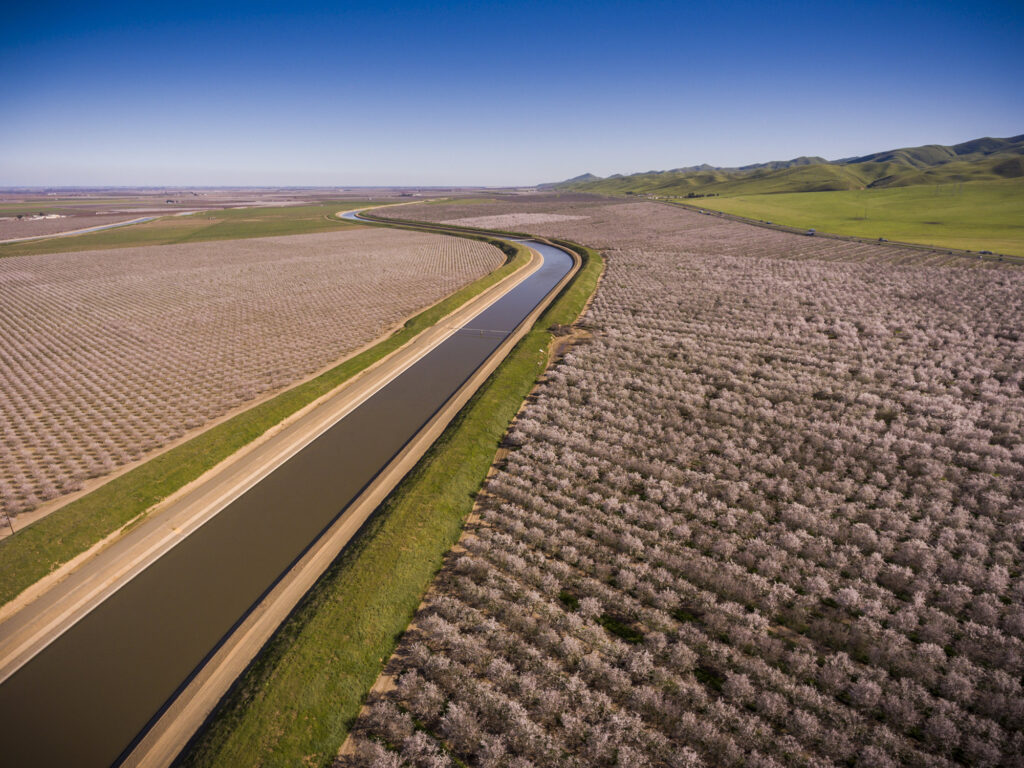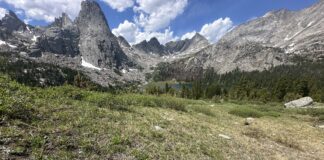A new book looks at the Golden State’s history to understand its current water crisis.
By Sean McCoy
My mother grew up on a tiny farm on the outskirts of Bakersfield in the 1960s. When I was little, she told me stories about the Basques who sheared their sheep, and described a childhood spent wandering among the family’s fruit and nut trees. It was a bucolic picture of California’s Central Valley, the type of picturesque image that journalist Mark Arax, in his sprawling new treatise on water and agriculture in the Golden State, is quick to undermine: Today, small family farms are vanishing, agribusiness is expanding, the earth is sinking, aquifers are emptying, rivers run dry, and laborers toil for a pittance.
In The Dreamt Land: Chasing Water and Dust Across California, Arax roams the state and plumbs its history to reveal the causes and consequences of its current water crisis. He reports on farms and the pipelines that supply them, interviewing fieldworkers and billionaire landowners, and interjecting tales of his family’s own agricultural forays and failures. His scope is impressive: He describes the cultivation of specialized grapes with the same clarity and finesse with which he unravels the state’s great mass of dams, aqueducts and complicated water rights. The result clearly depicts “the grandest hydraulic engineering feat known to man” — “one of the most dramatic alterations of the earth’s surface in human history.”
This engineering feat is at the center of the book’s most urgent questions. Despite recurring drought and a rapidly changing climate, each year the Central Valley produces another bountiful harvest. “How much was magic? How much was plunder?” Arax asks. The region accounts for over a third of the country’s vegetables, over two-thirds of our nuts and fruit; it boasts a million acres of almonds alone. Stewart Resnick of The Wonderful Company, the biggest grower of them all, shuttles 400,000 acre-feet of water per year to his 15 million trees, mostly almonds, pistachios, pomegranates and citrus. (The city of Los Angeles, for perspective, consumes 587,000 acre-feet annually.)
The bounty is largely plunder, of course, not magic. The plunder is as embedded in the state as the dream that made it possible. Arax traces this history from the Spanish colonial subjugation of Indigenous peoples to the conquering of the territory by U.S. forces, to the excavation of mountains for gold, to Los Angeles’ theft of the Owens River, to urban sprawl and suburban tracts — an unending cycle of supply and demand. Restraint was never an option. “No society in history has gone to greater lengths to deny its fundamental nature than California,” he writes. “California, for a century and two-thirds now, keeps forgetting its arrangement with drought and flood.”

Time and again in The Dreamt Land, we watch farmers ignore the certainty of drought, planting “to the absolute extreme of what the water could serve.” When farms in Tulare and Kern counties exhausted their local rivers, they drained the San Joaquin, which also proved insufficient. Such excessive planting and pumping, paired with the natural pendulum of flood and drought, perpetuated the fast disappearance of water. This “gave rise to both the need and ambition of a system”: the immense Central Valley Project and the State Water Project, which mine Northern California’s rivers and redistribute water to the Central Valley and the urban centers of the south.
Both projects were largely constructed between the late 1930s and early 1970s and designed to allow farmers to grow in both wet and dry years. But “the System,” as Arax methodically shows, was based on the flawed, idealized theory of an average year of weather; it presumed to deliver a constant, predictable supply, as if wild variations in precipitation did not exist or could be evened out by mathematics.
In reality, “the actual water captured and delivered (by the System) fell short of the normal or far beyond it.” When it fell short, which happened frequently, farmers were forced to confront the nearly 2 million-acre-foot difference. When the floods arrived, they again forgot the dry years and sowed new fields. Cities did the same and boomed. Then true drought set in, as it always does, and everyone scrambled to survive: The cities grabbed from the System; the government supplied subsidies to farmers; some farmers dug new wells and watched the ground sink beneath them; still others fallowed their land and sold their water to the highest bidder. As climate change accelerates, the cycles of drought and flood and the severity of their effects have only been exacerbated.
These are the stories of a people who refuse to face the limits of their landscape, whose attempts at control end up dirtying their own beds, and whose production, for now, is remarkably inflated. “Highest mountain, lowest desert, longest coast, most epic valley — (California) made for infinite invention.” This multitude is both the source of the state’s bounty and the substance of its myth. The California Dream is the American Dream with a dash of rouge and citrus — just as tantalizing, just as exclusive. Arax throws back the curtains, but a deeper question endures: Does his audience rise and respond, or do they remain asleep?
Sean McCoy is a writer from Arizona and the editor of Contra Viento, a journal for art and literature from rangelands.
This story originally appeared on High Country News on December 9, 2019 and is republished here by permission.
The Water Desk’s mission is to increase the volume, depth and power of journalism connected to Western water issues. We’re an initiative of the Center for Environmental Journalism at the University of Colorado Boulder. The Water Desk launched in April 2019 with support from the Walton Family Foundation. We maintain a strict editorial firewall between our funders and our journalism. The Water Desk is seeking additional funding to build and sustain the initiative. Click here to donate.






